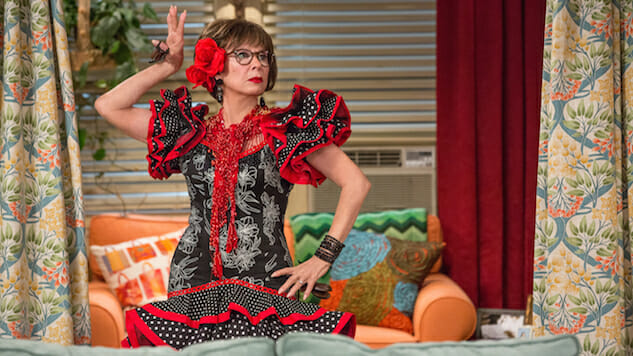Make ‘Em Laugh Track: How Netflix’s One Day at a Time Resuscitates the Multi-Cam Sitcom
Michael Yarish/Netflix
To say Netflix’s One Day a Time has old-school charm may seem like a backhanded compliment. A modern reboot of the CBS sitcom of the same name, which ran from 1975 to 1984, the show follows the Norman Lear playbook to a T. Here, as in the famed producer’s most beloved properties, which include All in the Family, The Jeffersons and the original One Day at a Time, is a family unit whose storylines index and find humor in the issues affecting American society at large. Shot in front of a live studio audience and taking place mostly in the type of family living room that has all its furniture pointing to the camera, it is as old-fashioned a sitcom as you’re likely to find on TV today. And while there’s plenty that makes Gloria Calderon Kellett and Mike Royce’s version of Lear’s sitcom “new”—including the Cuban-American heritage at its core—what’s most endearing about One Day at a Time is its repurposing of presumably dated television staples, including that most dreaded of throwbacks: the laugh track.
To be fair, the first scene of the show’s pilot is enough to give one pause. We meet nurse Penelope Alvarez (Justina Machado) as she’s asking a patient some required questions about his health. “Now we’re gonna do that thing where I ask you some basic health questions,” she tells him, “and you lie to me, okay?” There’s a smattering of laughter in the room, as if the audience were questioning whether the line as delivered is funny. The banter that follows gets the crowd warmed up, but it mostly just helps get the exposition out of the way: Penelope is a military vet, has two kids, and is separated from her husband, a fellow soldier who is still in Afghanistan. Judging the show from this scene alone, some may worry that what’s to follow is yet another multi-camera sitcom that thrives on canned jokes scored by laughter meant to echo and pre-empt their own. This is, after all, what these “old-school” sitcoms have become: hollow replicas of a format that, let’s face it, wasn’t all that great to begin with.
Or so the story goes.
From “Jerry” on Seinfeld and “Room and Board” on The Comeback to “Grizz & Herz” in 30 Rock and “White Trash” in Lady Dynamite, there’s no escaping the fact that over the past two decades multi-camera sitcoms have become their own punch lines. No matter that they continue to be successful (so long as they bear Chuck Lorre’s stamp of approval), it’s clear modern TV comedies have moved away from laugh tracks and living room sets. The artificiality of their environments and the saccharine messaging of their jokes have slowly gone out of fashion. They’ve been replaced by, on the one hand, a lightning fast brand of comedy that thrills for its quick-witted dialogue (see: Arrested Development, 30 Rock, Veep), and, on the other hand, by a grounded, only faintly comic look at the world (see: Girls, Louie, Transparent). And even as shows like Modern Family, Black-ish, Speechless, and Fresh Off the Boat have reinvigorated the family sitcom, the multi-cam format remains, for better and for worse, a relic of a time gone by.
-

-

-

-

-

-

-

-

-

-

-

-

-

-

-

-

-

-

-

-

-

-

-

-

-

-

-

-

-

-

-

-

-

-

-

-

-

-

-

-








































